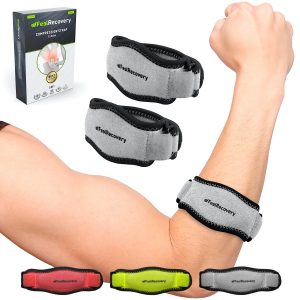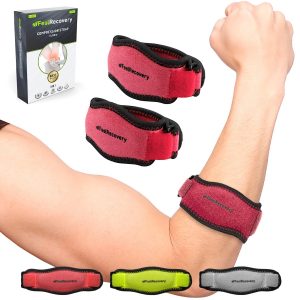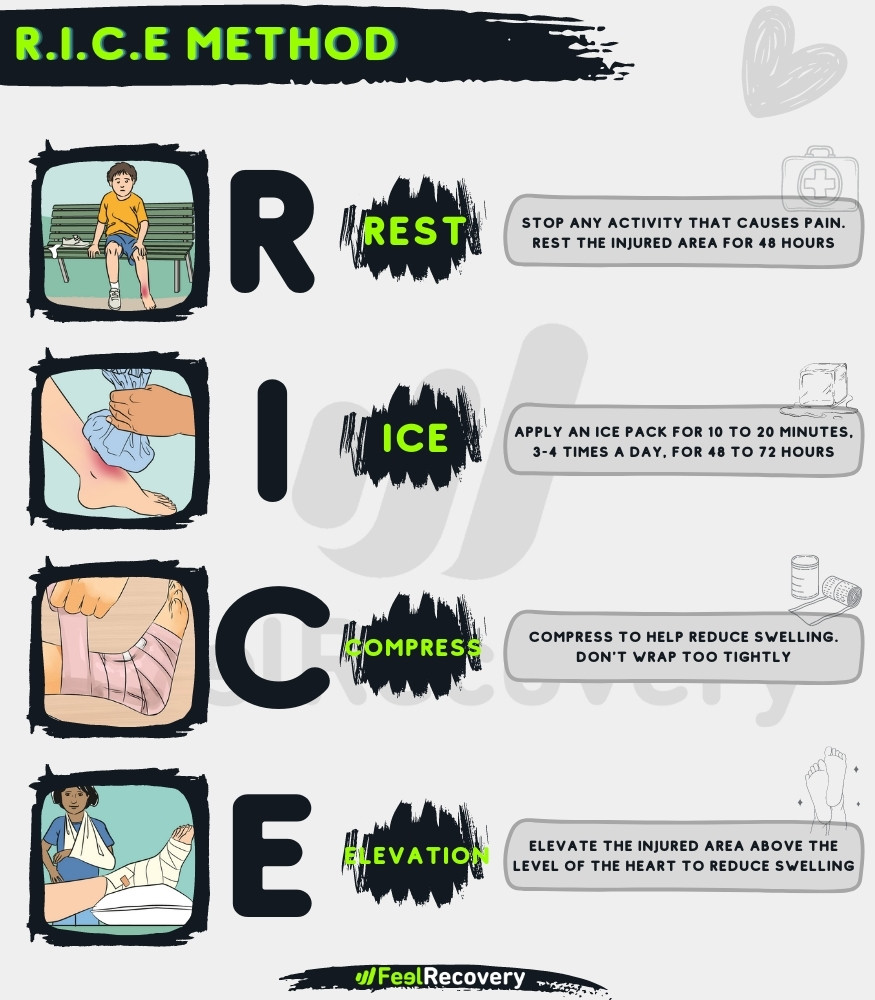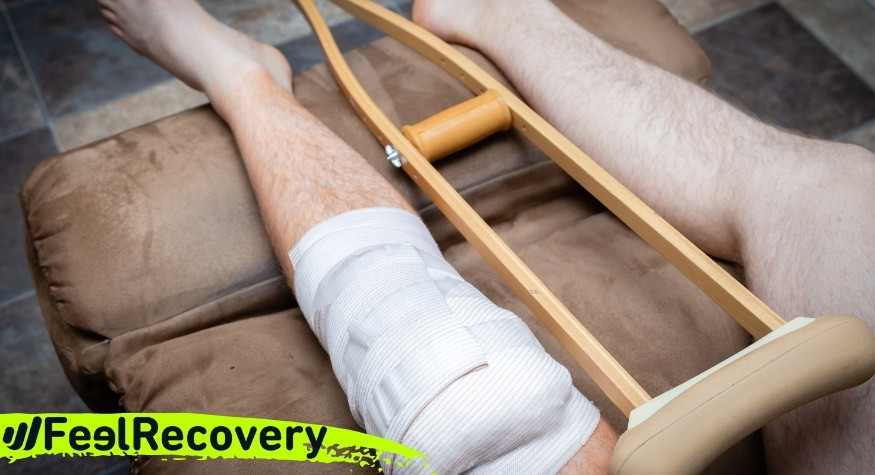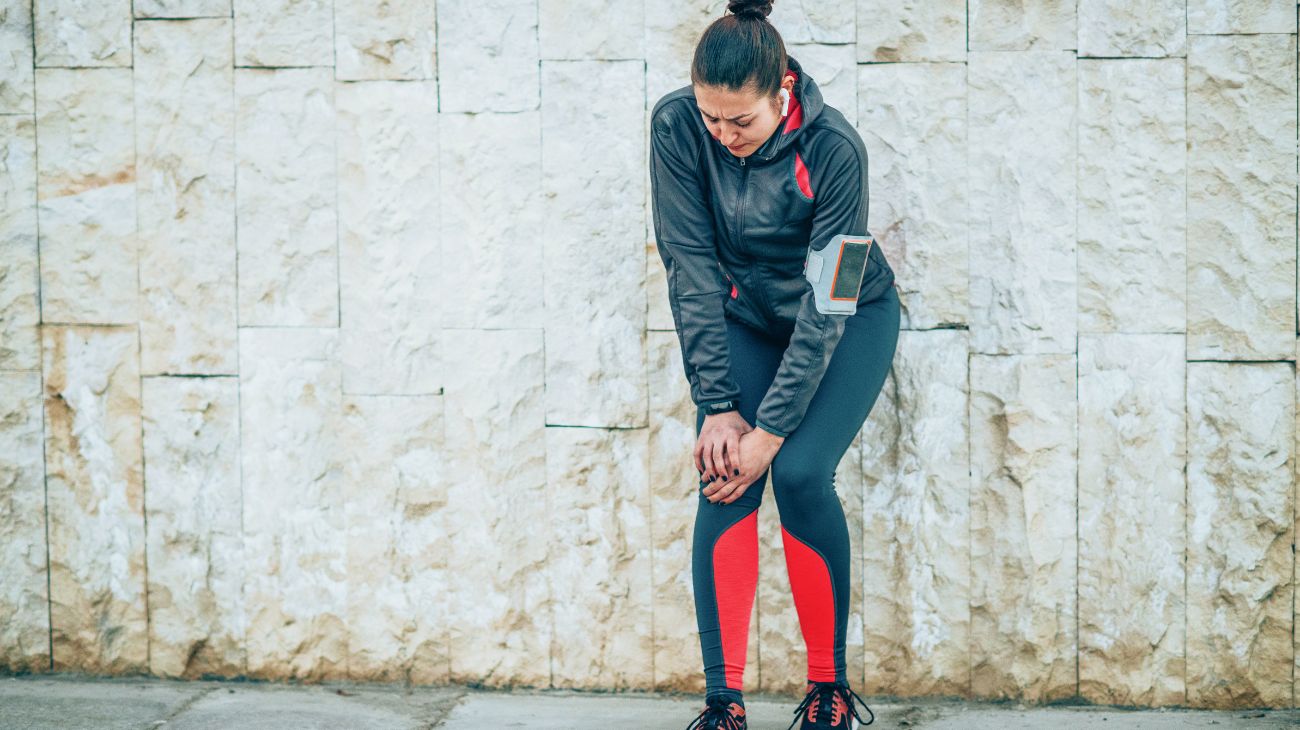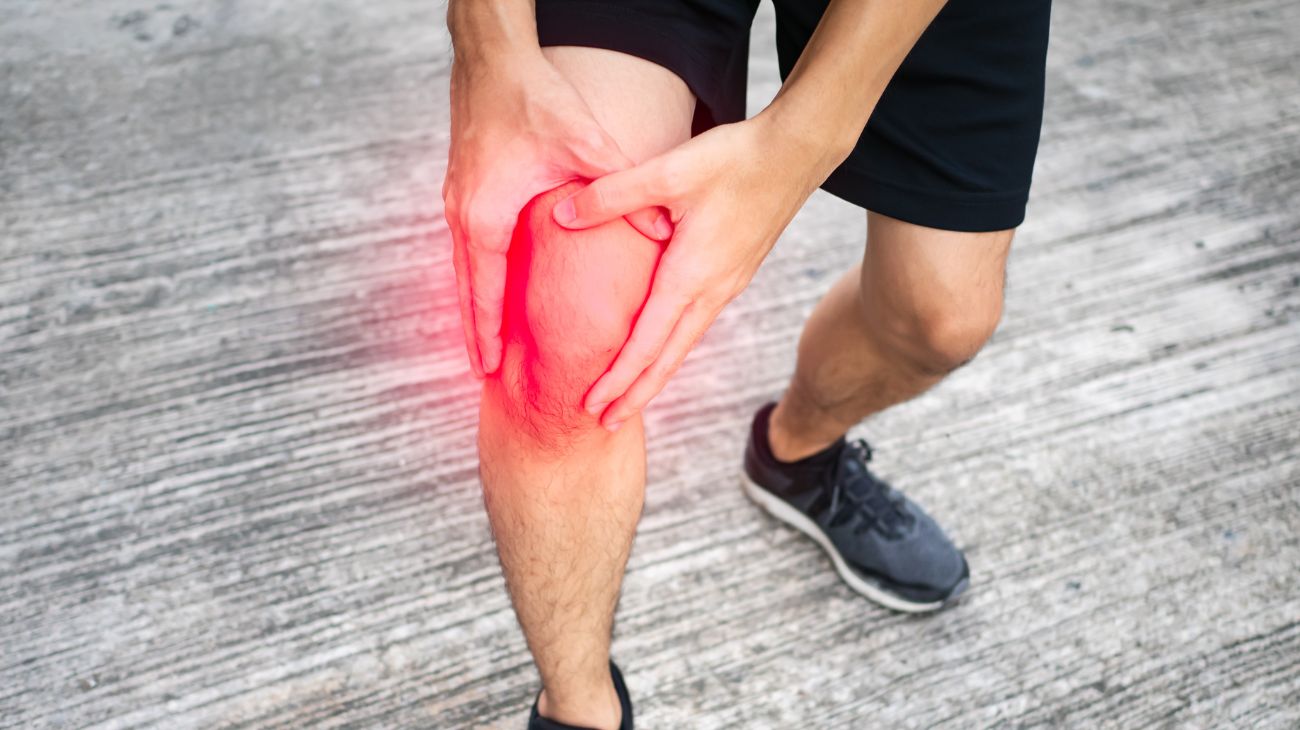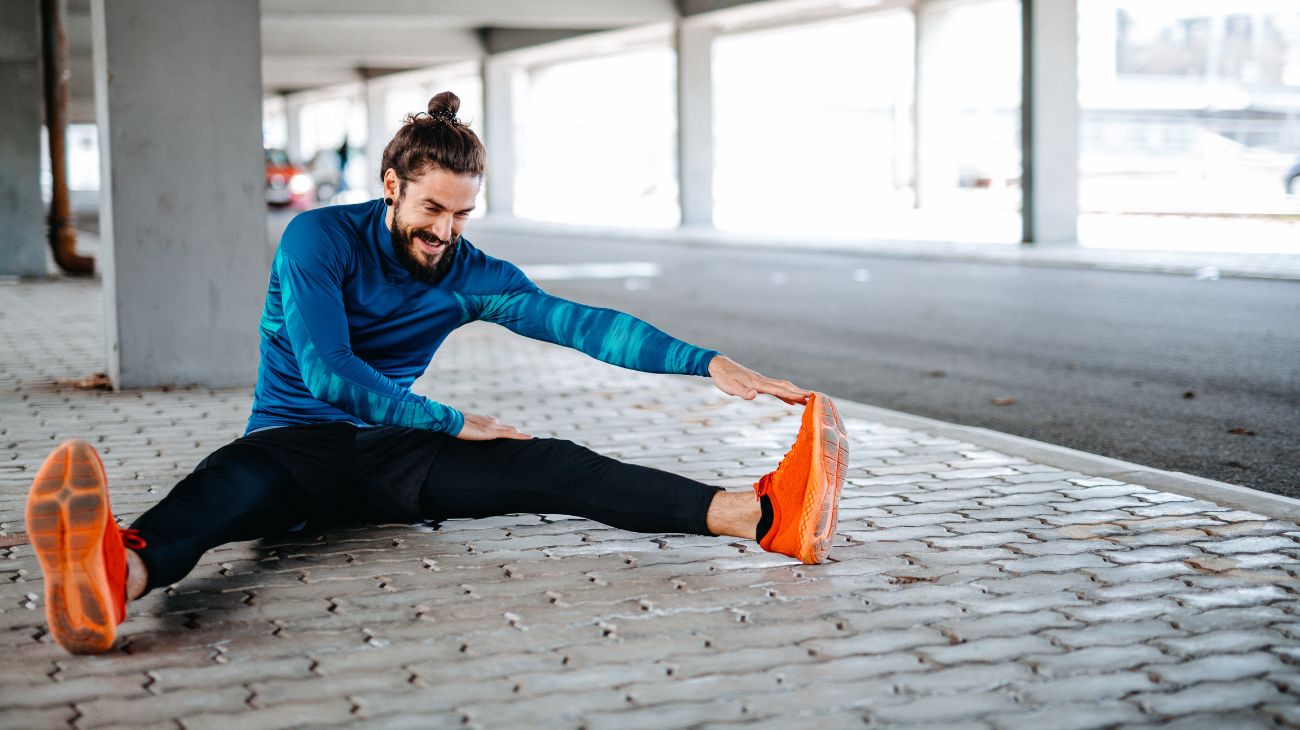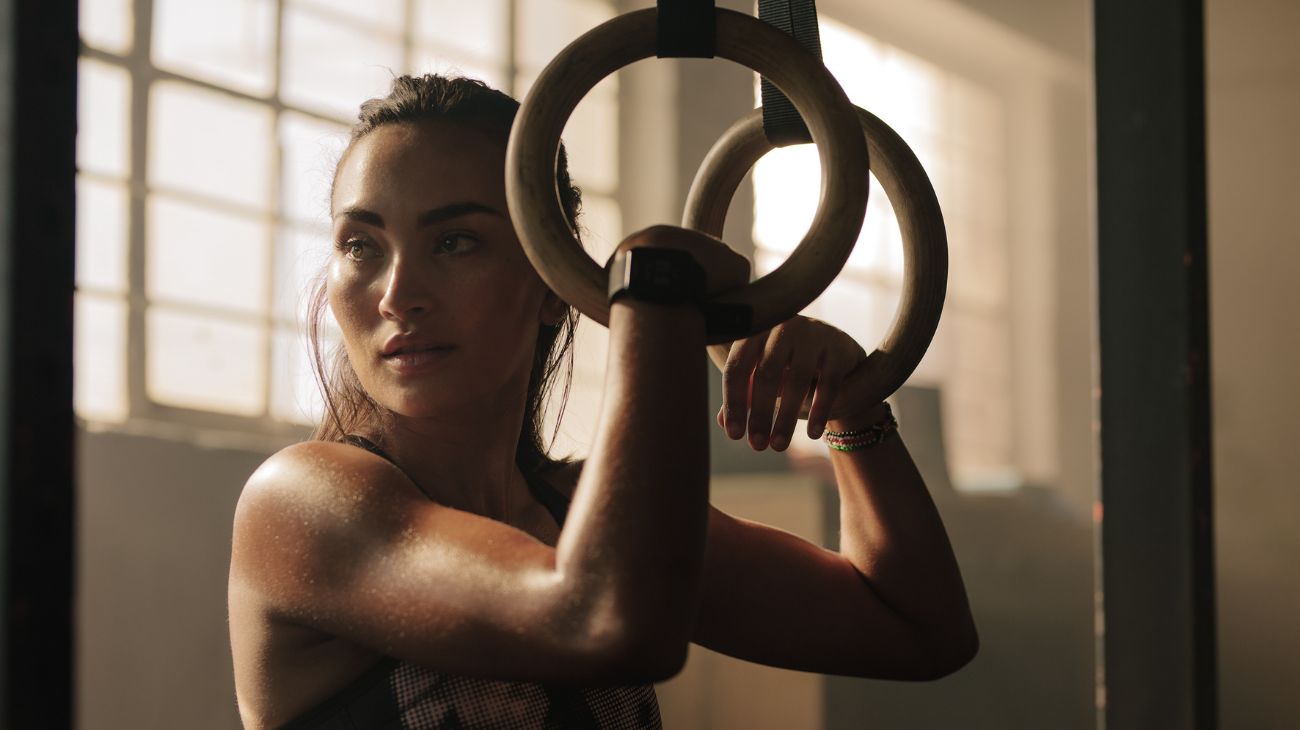Injury recovery is the process of returning to a normal state of health and function after an injury or physical trauma. It involves a combination of rest, rehabilitation, and various treatment modalities that can help to reduce pain, inflammation, and other symptoms associated with the injury. The recovery process may vary depending on the severity and type of injury, as well as the individual's age, health status, and overall physical condition.
Effective injury recovery requires a multidisciplinary approach, involving healthcare professionals such as physiotherapists, sports medicine specialists, and orthopedic surgeons, as well as the injured person's active participation in their own recovery through proper self-care, exercise, and rehabilitation techniques. The ultimate goal of injury recovery is to return the individual to their pre-injury level of function and activity, while minimizing the risk of future injury.
Best injury recovery products
bestseller
-
2 Ankle Compression Sleeve (Black/Gray)
$19.95 -
2 Ankle Compression Sleeve (Green/Navy)
$19.95 -
2 Ankle Compression Sleeve (Pink/Bordeaux)
$19.95 -
2 Elbow Compression Sleeve (Black/Gray)
$19.95 -
2 Elbow Compression Sleeve (Green/Navy)
$19.95 -
2 Elbow Compression Sleeve (Pink/Bordeaux)
$19.95 -
2 Knee Compression Sleeve (Black/Gray)
$19.95 -
2 Knee Compression Sleeve (Green/Navy)
$19.95 -
2 Knee Compression Sleeve (Pink/Bordeaux)
$19.95 -
2 Patella Knee Strap (Black/Gray)
$14.95 -
2 Patella Knee Strap (Green/Navy)
$14.95 -
2 Patella Knee Strap (Pink/Bordeaux)
$14.95 -
2 Tennis Elbow Brace (Black/Gray)
$14.95 -
2 Tennis Elbow Brace (Green/Navy)
$14.95 -
2 Tennis Elbow Brace (Pink/Bordeaux)
$14.95 -
2 Thigh Compression Sleeve (Black/Gray)
$19.95 -
2 Thigh Compression Sleeve (Green/Navy)
$19.95 -
2 Thigh Compression Sleeve (Pink/Bordeaux)
$19.95 -
Back Support Belt (Black)
$34.95 -
Back Support Belt (Green)
$34.95 -
Back Support Belt (Pink)
$34.95 -
Foot Massage Roller for Plantar Fasciitis (Black)
$19.95 -
Foot Massage Roller for Plantar Fasciitis (Green)
$19.95 -
Foot Massage Roller for Plantar Fasciitis (Pink)
$19.95 -
Heating Pad for Microwave Classic Bottle Shaped (Hearts)
$19.95 -
Heating Pad for Microwave Classic Bottle Shaped (Oxford)
$19.95 -
Heating Pad for Microwave Classic Bottle Shaped (Sport)
$19.95 -
Ice Massage Roller Ball (Black)
$39.95 -
Ice Massage Roller Ball (Green)
$39.95 -
Ice Massage Roller Ball (Pink)
$39.95 -
Microwave Heating Pad for Neck & Shoulder Pain Relief (Hearts)
$24.95 -
Microwave Heating Pad for Neck & Shoulder Pain Relief (Oxford)
$24.95 -
Microwave Heating Pad for Neck & Shoulder Pain Relief (Sport)
$24.95 -
Microwaveable Heating Pad for Pain Relief (Hearts)
$19.95 -
Microwaveable Heating Pad for Pain Relief (Oxford)
$19.95 -
Microwaveable Heating Pad for Pain Relief (Sport)
$19.95 -
Pack 2 In 1 Foam Roller High + Soft Density (Black/Gray)
$29.95 -
Pack 2 In 1 Foam Roller High + Soft Density (Green/Navy)
$29.95 -
Pack 2 In 1 Foam Roller High + Soft Density (Pink/Bordeaux)
$29.95 -
Sacroiliac Support Belt (Black)
$24.95 -
Sacroiliac Support Belt (Green)
$24.95 -
Sacroiliac Support Belt (Pink)
$24.95 -
Shoulder Support Brace (Black)
$24.95 -
Shoulder Support Brace (Green)
$24.95 -
Shoulder Support Brace (Pink)
$24.95 -
Soft Density Foam Roller for Recovery (Black)
$29.95 -
Soft Density Foam Roller for Recovery (Green)
$29.95 -
Soft Density Foam Roller for Recovery (Pink)
$29.95 -
Wrist Brace (Black/Gray)
$19.95 -
Wrist Brace (Green/Navy)
$19.95 -
Wrist Brace (Pink/Bordeaux)
$19.95
What are the most common injuries?
Here are the 10 most common injuries:
- Sprains and strains: These injuries involve the stretching or tearing of ligaments or muscles, and are often caused by sports or physical activity.
- Fractures: A fracture is a broken bone, and can be caused by a variety of accidents or injuries.
- Contusions: A contusion, also known as a bruise, is a injury caused by a blow to the body, and can result in discoloration and pain.
- Lacerations: A laceration is a cut or tear in the skin, and can be caused by a variety of accidents or injuries.
- Concussions: A concussion is a type of brain injury that can be caused by a blow to the head, and can result in symptoms such as headache, dizziness, and confusion.
- Dislocations: A dislocation occurs when a bone is forced out of its normal position, and can be caused by accidents or sports injuries.
- Tendinitis: Tendinitis is an inflammation of the tendons, and can be caused by overuse or repetitive motions.
- Bursitis: Bursitis is an inflammation of the small, fluid-filled sacs that cushion the joints, and can be caused by repetitive motions or trauma.
- Rotator cuff injuries: The rotator cuff is a group of muscles and tendons that surround the shoulder joint, and can be injured by overuse or trauma.
- Plantar fasciitis: Plantar fasciitis is an inflammation of the plantar fascia, a band of tissue that connects the heel bone to the toes, and is often caused by repetitive stress or overuse.
Science-based techniques and methods for injury recovery
There are several science-based techniques and methods for injury recovery. Here are some of the most effective:
- Rest: Rest is essential for injury recovery. It allows the body to focus its energy on healing the injured area.
- Ice: Applying ice to the affected area can help reduce pain, inflammation, and swelling.
- Compression: Using compression, such as a compression bandage, can help reduce swelling and provide support to the affected area.
- Elevation: Elevating the affected area above heart level can also help reduce swelling and promote healing.
- Physical therapy: Physical therapy can help restore strength, flexibility, and range of motion in the affected area.
- Heat therapy: Heat therapy, such as a warm compress, can help increase blood flow and promote healing.
- Massage therapy: Massage therapy can help reduce muscle tension and improve circulation to the affected area.
- Acupuncture: Acupuncture can help relieve pain and promote healing by stimulating specific points in the body.
- Exercise: Controlled and progressive exercise can help promote healing, prevent muscle atrophy, and restore function to the affected area.
- Proper nutrition: Proper nutrition is essential for injury recovery. Eating a balanced diet with adequate protein, vitamins, and minerals can help support the healing process.
Injury recovery time after surgery
Here are the 10 most common operations and their typical injury recovery times after surgery:
- Knee replacement: Recovery time can vary, but it generally takes 3-6 weeks to be able to walk with a cane, and 3-6 months to return to normal activities.
- Hip replacement: Recovery time can vary, but it generally takes 4-6 weeks to be able to walk without assistance, and 6-12 months to return to normal activities.
- Rotator cuff repair: Recovery time can vary, but it generally takes 6-12 weeks to regain full range of motion, and 3-6 months to return to normal activities.
- Spinal fusion: Recovery time can vary, but it generally takes 3-6 months to return to normal activities.
- ACL reconstruction: Recovery time can vary, but it generally takes 6-9 months to return to normal activities.
- Gallbladder removal: Recovery time is typically 1-2 weeks to return to normal activities.
- Hernia repair: Recovery time can vary, but it generally takes 4-6 weeks to return to normal activities.
- Cataract surgery: Recovery time is typically 1-2 days to return to normal activities.
- Carpal tunnel release: Recovery time can vary, but it generally takes 2-4 weeks to regain full range of motion, and 4-6 weeks to return to normal activities.
- Tonsillectomy: Recovery time is typically 10-14 days to return to normal activities.
Best rehab exercises for injury recovery
The best rehabilitation exercises for injury recovery depend on the specific injury and its severity. However, here are some examples of exercises that are commonly used in rehabilitation:
- Range of motion exercises: These exercises aim to increase the flexibility of the affected area and prevent stiffness. They can include gentle stretching, joint mobilization, and active range of motion exercises.
- Strengthening exercises: Strengthening exercises can help to rebuild the muscles around the affected area and prevent future injuries. They can include resistance training, bodyweight exercises, and functional movements.
- Balance and proprioception exercises: These exercises help to improve balance and coordination, which can be especially important for lower limb injuries. Examples include standing on one leg, using a wobble board, and performing single-leg squats.
- Cardiovascular exercises: Cardiovascular exercises can help to improve overall fitness and promote healing by increasing blood flow. Examples include walking, cycling, swimming, and low-impact aerobics.
- Plyometric exercises: These exercises involve quick, explosive movements and are often used in later stages of rehabilitation to improve power and agility. Examples include jumping exercises, bounding, and hops.
- Shoulder Circles: Stand with your feet shoulder-width apart and your arms at your sides. Slowly circle your shoulders forward for 10 repetitions, then circle them backward for 10 repetitions.
- Ankle Alphabet: Sit with your legs extended in front of you. Draw the alphabet in the air with your toes, keeping your ankles relaxed and your movements controlled.
- Hip Flexor Stretch: Kneel on your left knee with your right foot in front of you, bent at a 90-degree angle. Lean forward, keeping your back straight, until you feel a stretch in your left hip. Hold for 20-30 seconds, then switch legs.
- Cat-Cow Stretch: Start on your hands and knees with your wrists under your shoulders and your knees under your hips. Inhale and arch your back, lifting your head and tailbone toward the ceiling. Exhale and round your spine, tucking your chin to your chest and tucking your tailbone under. Repeat for 10 repetitions.
- Standing Hamstring Stretch: Stand with your feet hip-width apart. Lift one foot and place it on a surface that is slightly higher than the ground, such as a step or bench. Keep your leg straight and gently lean forward until you feel a stretch in the back of your thigh. Hold for 20-30 seconds, then switch legs.
It is important to note that these exercises should be performed under the guidance of a qualified healthcare professional, such as a physical therapist, who can tailor the exercises to your specific needs and stage of recovery.
F.A.Q: Frequently asked questions
References
- Gennarelli, S. M., Brown, S. M., & Mulcahey, M. K. (2020). Psychosocial interventions help facilitate recovery following musculoskeletal sports injuries: a systematic review. The Physician and Sportsmedicine, 48(4), 370-377. https://www.tandfonline.com/doi/abs/10.1080/00913847.2020.1744486
- sÁEZ DE HEREDIA, R. A., MUÑOZ, A. R., & ARTAZA, J. L. (2004). The effect of psychological response on recovery of sport injury. Research in Sports Medicine, 12(1), 15-31. https://www.tandfonline.com/doi/abs/10.1080/15438620490280567
- Laubach, W. J., Brewer, B. W., Van Raalte, J. L., & Petitpas, A. J. (1996). Attributions for recovery and adherence to sport injury rehabilitation. Australian Journal of Science and Medicine in Sport, 28(1), 30-34. https://europepmc.org/article/med/8742864
- Papadopoulou, S. K. (2020). Rehabilitation nutrition for injury recovery of athletes: the role of macronutrient intake. Nutrients, 12(8), 2449. https://www.mdpi.com/2072-6643/12/8/2449
- Swenson, C., Swärd, L., & Karlsson, J. (1996). Cryotherapy in sports medicine. Scandinavian journal of medicine & science in sports, 6(4), 193-200. https://onlinelibrary.wiley.com/doi/abs/10.1111/j.1600-0838.1996.tb00090.x
- Van Den Bekerom, M. P., Struijs, P. A., Blankevoort, L., Welling, L., Van Dijk, C. N., & Kerkhoffs, G. M. (2012). What is the evidence for rest, ice, compression, and elevation therapy in the treatment of ankle sprains in adults?. Journal of athletic training, 47(4), 435-443. https://meridian.allenpress.com/jat/article/47/4/435/111307/What-Is-the-Evidence-for-Rest-Ice-Compression-and
- Gita, E. G. A., Dian, T. A., & Nawang, G. (2020). Knowledge Levels Of Rest, Ice, Compression, Elevation Method With The Implementation Of Injury Handling In Sport Student Activity Units. JOURNAL OF WIDYA MEDIKA JUNIOR, 2(1), 38-46. http://jurnal.wima.ac.id/index.php/JWMJ/article/view/2334
- Podlog, L., Dimmock, J., & Miller, J. (2011). A review of return to sport concerns following injury rehabilitation: practitioner strategies for enhancing recovery outcomes. Physical Therapy in Sport, 12(1), 36-42. https://www.sciencedirect.com/science/article/abs/pii/S1466853X1000074X
- Heiderscheit, B. C., Sherry, M. A., Silder, A., Chumanov, E. S., & Thelen, D. G. (2010). Hamstring strain injuries: recommendations for diagnosis, rehabilitation, and injury prevention. journal of orthopaedic & sports physical therapy, 40(2), 67-81. https://www.jospt.org/doi/full/10.2519/jospt.2010.3047
- Järvinen, T. A., Järvinen, T. L., Kääriäinen, M., Äärimaa, V., Vaittinen, S., Kalimo, H., & Järvinen, M. (2007). Muscle injuries: optimising recovery. Best practice & research Clinical rheumatology, 21(2), 317-331. https://www.sciencedirect.com/science/article/abs/pii/S1521694206001471


























